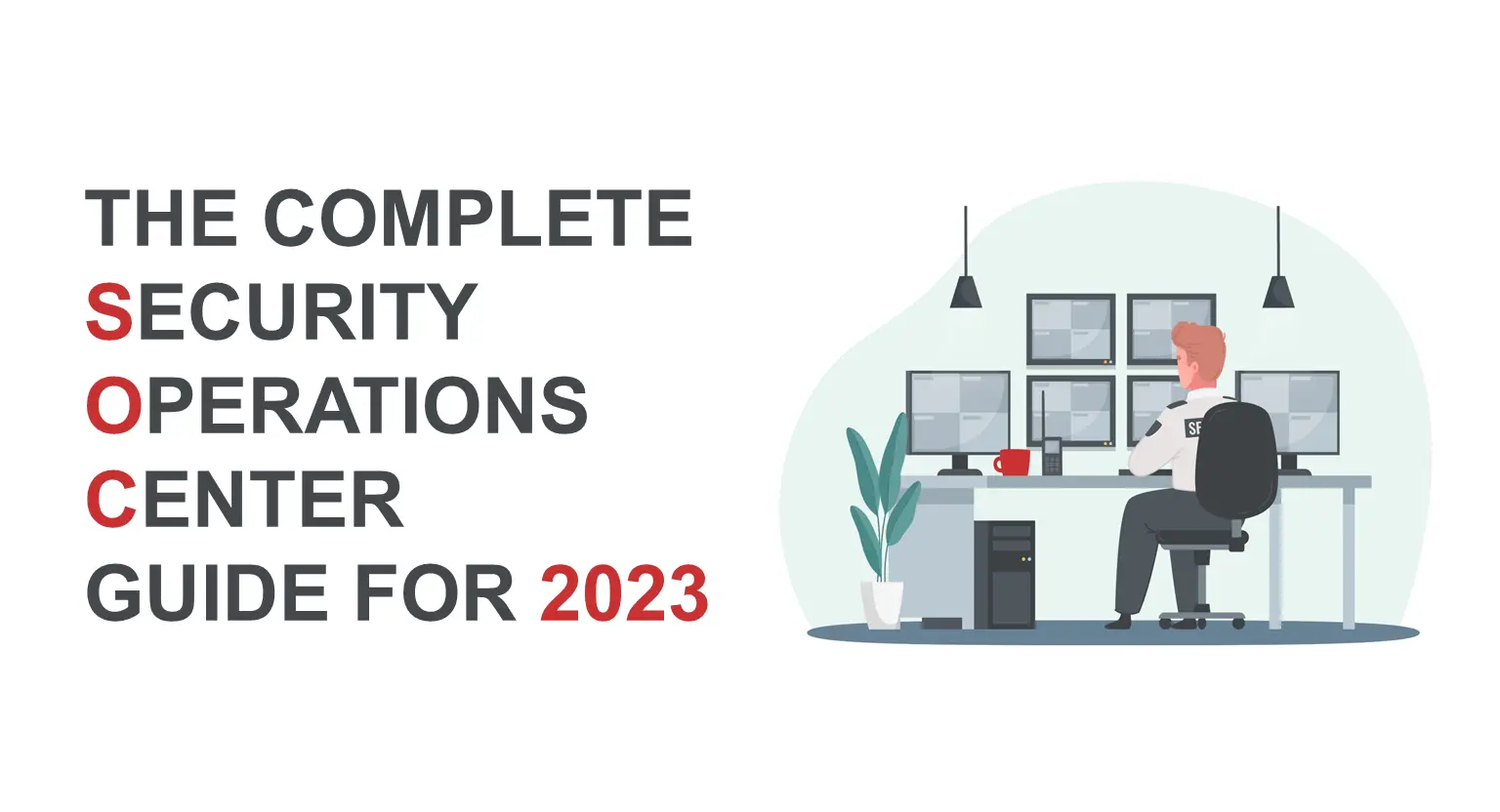The Complete Security Operations Center Guide for 2023

1 Minutes 56 Seconds | 1691 views
Listen This Blog Now!
Introduction
As the world becomes increasingly dependent on technology, the need for robust security measures has never been greater. A Security Operations Center (SOC) plays a crucial role in protecting organizations from cyber threats. In this guide, we’ll provide an overview of what a SOC is, its components, and how to set one up.
What is a Security Operations Center?
A Security Operations Center (SOC) is a centralized team responsible for monitoring and analysing an organization's security posture 24/7. The primary goal of a SOC is to detect, respond to, and prevent cyber-attacks. A well-functioning SOC should be able to quickly identify security incidents, assess the potential impact, and implement mitigation measures to prevent further damage.
Components of a SOC
-
Threat Intelligence: Gathering and analysing data from a variety of sources to identify potential threats and vulnerabilities.
-
Security Information and Event Management (SIEM): A tool that collects and aggregates security events from multiple sources to provide a comprehensive view of an organization's security posture.
-
Security Incident and Event Management (SIEM): A process for managing security incidents, including detection, analysis, response, and recovery.
-
Vulnerability Management: The process of identifying, classifying, and remedying security weaknesses in systems, applications, and network infrastructure.
-
Security Automation and Orchestration (SAO): The use of technology to automate repetitive security tasks and streamline incident response.
-
Penetration Testing: The simulation of a real-world attack to identify security vulnerabilities and evaluate an organization's ability to detect and respond to a breach.
Setting up a SOC
-
Define the scope: Determine what security services the SOC will provide and the scope of its responsibilities.
-
Gather resources: Assemble the necessary personnel, tools, and technology to support the SOC's operations.
-
Establish policies and procedures: Develop and implement policies and procedures for incident response, threat management, and security governance.
-
Implement technology: Choose and implement the necessary tools, including SIEM, security automation, and orchestration technology.
-
Train personnel: Ensure that all personnel involved in the SOC receive the necessary training to perform their duties effectively.
-
Continuously monitor and improve: Continuously monitor the SOC's performance and make necessary improvements to ensure that it remains effective.
Conclusion
In conclusion, a Security Operations Center is a critical component of any organization's security posture. By following this guide, organizations can establish a SOC that is equipped to detect and respond to cyber threats, minimize the impact of security incidents, and ensure the protection of sensitive data and systems.
Take your security game to the next level with the Complete Security Operations Center Guide for 2023. Get started now with CyberNX.
Table Of Content
- Introduction
- Components of a SOC
- Threat Intelligence
- Security Information and Event Management
- Security Incident and Event Management
- Vulnerability Management
- Security Automation and Orchestration
- Penetration Testing
-
Setting up a SOC
- Define the scope
- Gather resources
- Establish policies and procedures
- Implement technology
- Train personnel
- Continuously monitor and improve
- Conclusion
Introduction
As the world becomes increasingly dependent on technology, the need for robust security measures has never been greater. A Security Operations Center (SOC) plays a crucial role in protecting organizations from cyber threats. In this guide, we’ll provide an overview of what a SOC is, its components, and how to set one up.
What is a Security Operations Center?
A Security Operations Center (SOC) is a centralized team responsible for monitoring and analysing an organization's security posture 24/7. The primary goal of a SOC is to detect, respond to, and prevent cyber-attacks. A well-functioning SOC should be able to quickly identify security incidents, assess the potential impact, and implement mitigation measures to prevent further damage.
Components of a SOC
-
Threat Intelligence: Gathering and analysing data from a variety of sources to identify potential threats and vulnerabilities.
-
Security Information and Event Management (SIEM): A tool that collects and aggregates security events from multiple sources to provide a comprehensive view of an organization's security posture.
-
Security Incident and Event Management (SIEM): A process for managing security incidents, including detection, analysis, response, and recovery.
-
Vulnerability Management: The process of identifying, classifying, and remedying security weaknesses in systems, applications, and network infrastructure.
-
Security Automation and Orchestration (SAO): The use of technology to automate repetitive security tasks and streamline incident response.
-
Penetration Testing: The simulation of a real-world attack to identify security vulnerabilities and evaluate an organization's ability to detect and respond to a breach.
Setting up a SOC
-
Define the scope: Determine what security services the SOC will provide and the scope of its responsibilities.
-
Gather resources: Assemble the necessary personnel, tools, and technology to support the SOC's operations.
-
Establish policies and procedures: Develop and implement policies and procedures for incident response, threat management, and security governance.
-
Implement technology: Choose and implement the necessary tools, including SIEM, security automation, and orchestration technology.
-
Train personnel: Ensure that all personnel involved in the SOC receive the necessary training to perform their duties effectively.
-
Continuously monitor and improve: Continuously monitor the SOC's performance and make necessary improvements to ensure that it remains effective.
Conclusion
In conclusion, a Security Operations Center is a critical component of any organization's security posture. By following this guide, organizations can establish a SOC that is equipped to detect and respond to cyber threats, minimize the impact of security incidents, and ensure the protection of sensitive data and systems.
Take your security game to the next level with the Complete Security Operations Center Guide for 2023. Get started now with CyberNX.
Share this on: